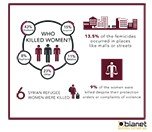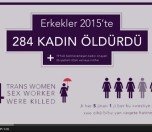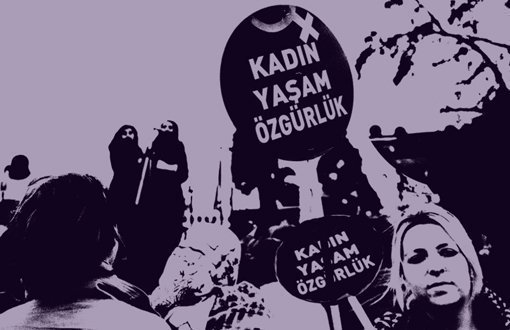Click to read the article in Turkish / Kurdish
According to reports bianet compiled from local and national newspapers, news websites and agencies, men killed at least 240 women and girls; raped 77; harassed 207; sexually abused 286 girls and inflicted violence on 338 women in the first 10 months of 2017.
At least 11 of the 240 women (4,5%) were murdered despite having issued an injunction/restraining order.
In 56 of the 240 femicide cases (23%), the women were murdered for seeking divorce, wanting to break up or having rejected a marriage proposal.
9 women (6%), were murdered by men, whom their mothers or sisters wanted to divorce or break up with.
44 of the femicide cases (18%) took place before everyone's eyes in public places such as in the middle of a street, a shopping mall, the lobby of a hotel, school, workplace, in front of a courthouse, bus stop and market place.
At least 286 girls were sexually abused
At least 286 incidents of sexual harassment against girls were reported in the media. 4% of the abused girls had mental disabilities.
14% of the girls were harassed by their teachers or trainers, 5,6% by their male relatives and 4,5% by an imam (Muslim religious leader/priest in a mosque) or their religion teachers.
Other groups of harassers were the friends of the girl's close relatives, shopkeepers, acquaintances from the neighbourhood, neighbours, employees in the institutions (schools, social services or child protection services) that the girls visited as well as men whom the girls have met on social media.
41 of the child abuse cases (14%) were revealed after the girls told their families about the harassment, 9% of the cases, after the girls talked to their teachers about the harassment or the teachers recognized the situation. In 5% of the cases, the harassment came to light after the girls were pregnant.
* This Male Violence Monitoring report covers the male violence cases that occurred the period between January 1 - November 1, 2017 .
ExplanationThe bianet Male Violence Monitoring Report only covers women who lost their lives as a result of male violence. We do not take include any violence cases or crimes that are not gender-based. Throughout the year, we keep track of unidentified murders and suspicious deaths of women in separate monthly tallies but do not add them to the number presented in the headline. At the end of the year, we examine these cases of unidentified murders and suspicious deaths to determine whether the crimes were gender-based. In time, when we come to the conclusion that a crime is gender-base, we include it in the end-of-year tally. We do not include any murders in the reports that are committed by people with psychological disorders (such as murders committed by people with schizophrenia). We include suicide or suicide attempt incidents in the tally only if the woman was subjected to violence/systematical violence in her past. We cover these suicide incidents in a separate category and do not add suicide cases to the number presented in the headline. In addition, we don't include femicide cases that occur in a mass murder in which the woman was not directly targeted under the condition that the debated incident is not gender based either. For example, following case from June 11, 2017 was not included in our male violence report: * A.K. (27), a rancher in Konya province killed his relatives Bekir Kıran (80/male), Mustafa Tokat (80/male), Meryem Tokat (79/female), Hamit Tokat (51/male) and Mehmet Tokat (64/male) with a barreled-gun. He was caught on the way home after committing the murders. It was reported, that A.K. had schizophrenia and considered the villagers responsible for the death of his father, who had lost his life after a heart attack. The occupational groups mentioned in the report, only cover cases in which the occupations have relevance for the act of violence. * Example: "The expression "x% of the rapists were drivers",imply that the woman was raped by the driver of the (public) transportation vehicle she used. |
(ÇT/DG)








132.jpg)

.jpg)



